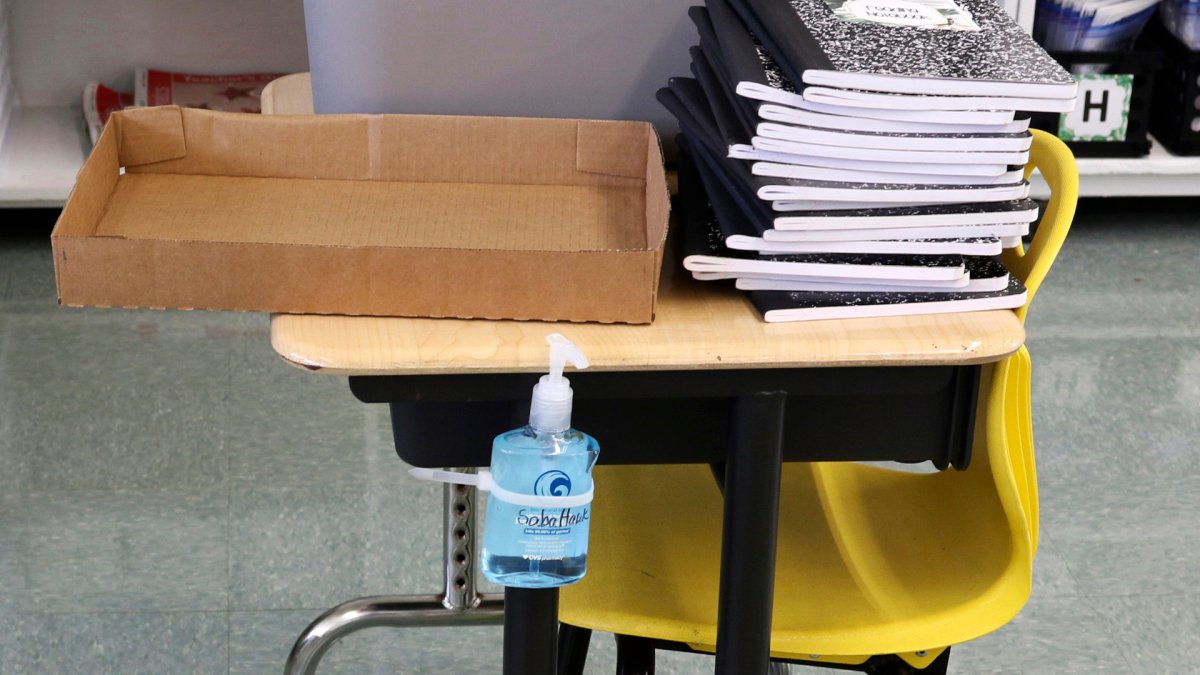As school boards across Canada begin planning for a return in the fall amid the COVID-19 pandemic, a Canadian public health think tank is suggesting that the spread of the coronavirus in such a setting is more likely to come from an adult rather than a child.

Reviews of public health information across Canada, completed by the National Collaborating Centre for Methods and Tools (NCCMT) with the aid of federal funding, showed that prior to the pandemic, clusters of infections involving children were primarily transmitted through an adult in a home or community environment rather than from a child at school.
“What we see consistently across studies is that children are not likely to be major sources of COVID-19 transmission,” said Sarah Neil-Sztramko, an assistant professor with the NCCMT and McMaster’s department of health research.
“It’s also important to note the evidence is primarily in younger children, and older children when they get into high school, they seem like they transmit more similarly to adults,” according to Neil-Sztramko.
The NCCMT says the trend was observed after collecting daily published research from local health units in addition to questioning public health decision-makers across the country and conducting searches of all available high-quality scientific studies.
“As we think about how to reopen daycares and schools, making sure that we keep those (COVID-19 safety) measures that we know work in place for the adults, teachers, staff and parents that are coming in and out,” said Neil-Sztramko.
Further evidence also suggests children under 10 typically have more mild cases of the virus; however, they are not excluded from potentially coming down with a more serious case.
“So we do want to make sure that we take that seriously,” Neil-Sztramko said. “But based on this, it looks like the likelihood of transmitting in school and daycare settings are much lower than we might have initially thought.”

Get weekly health news
The NCCMT review began in May, has been updated three times and considers information from 33 research publications.
Dr. Michael Silverman, chief of infectious diseases at London Health Sciences, in his experience concurs with the evidence from the reports saying children experience fewer symptoms than adults.
“They’re much less likely to get severely ill and they’re extremely unlikely to succumb to it,” said Silverman. “So in Canada, we’ve had over 8,000 deaths in adults and there is a report of 11 possible deaths in a child under 19.”
Historically, children have been tagged as spreaders of influenza and other respiratory viruses, according to Silverman, but in the case of COVID-19, he says this appears not to be true.
“(The coronavirus is) commonly spread by speaking, particularly speaking loudly and singing, and children have smaller voices. They are not as tall, so with routine speaking, they’re often not projecting into an adult’s face,” Silverman said.
Additionally, Silverman says children appear to have fewer receptors for the virus in their upper airway.
“So in their nose and throat, the receptors that help the virus stick on and cause and start infection, as well as to spread, are less common in children, especially young children, than they are in adults. That may make them less likely to get the virus and less likely to spread the virus,” according to Silverman.
On Wednesday, Sick Kids Hospital released its recommendations on how schools should prepare for a return to class in the fall, suggesting smaller class sizes to aid in physical distancing.
The hospital also said one-metre (three feet) distancing between children would provide adequate protection since they are “likely less efficient transmitters” of the coronavirus.
The Sick Kids guidelines admit that the use of non-medical masks is a “complex and nuanced issue” and that more study on the matter will need to be done. Generally, the organization is recommending use for school kids but with an emphasis on high school and middle school students in indoor settings.
Dr. Jeffery Pernica, a professor in pediatrics and the head of pediatric infectious disease at McMaster University, says for children, the masking issue really is the “fourth or fifth line of defence” behind all other recommendations from Sick Kids.
Pernica says the consensus around masks in schools is likely cloudy is because of the lack of evidence it is beneficial in a school environment.
“Being in school is not the same as going to a grocery store, right, and so the same rules do not necessarily apply,” said Pernica. “What they do with their mask when they eat lunch or have a drink of water, whether or not they share their masks. There’s all this stuff that’s going to happen in reality that we don’t know yet.”
Pernica is “fascinated” with the question of why kids are spared the worst aspects of the disease, and says their reaction to it is in “stark contrast” with how they deal with other major respiratory viruses.
“Most of these things, RSV (respiratory syncytial virus), parainfluenza, adenoviruses, enterovirus, they go around like wildfire,” Pernica said. “For some reason, you know, these young kids get less sick and spread the (coronavirus) less than 40-year-olds.”
However, Dr. David Fisman, epidemiologist and professor at the Dalla Lana School of Public Health at the University of Toronto, says we shouldn’t discount the effect of the disease on children as they are not totally immune to severe infections.
“We do have a child death in Ontario now from COVID, and south of the border they’ve had a number of child deaths. I think they’re pushing 100 kid deaths in the U.S. in the face of a much bigger epidemic than we’ve had here,” Fisman said.











Comments